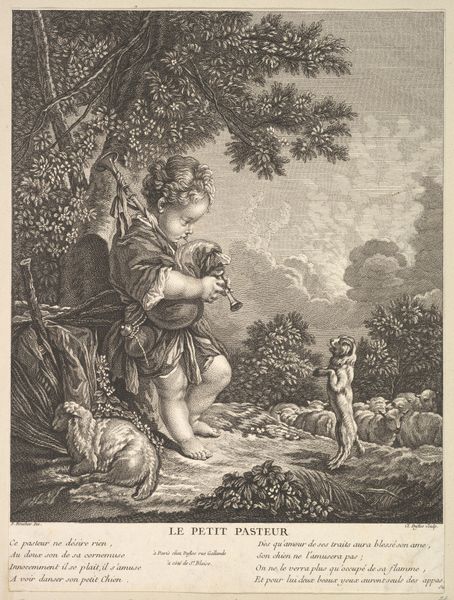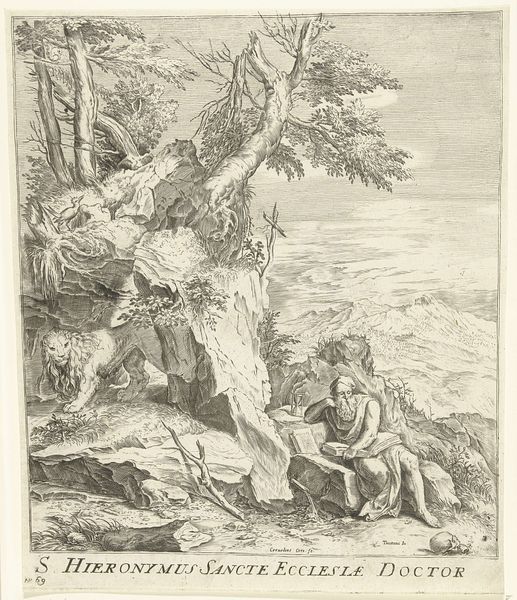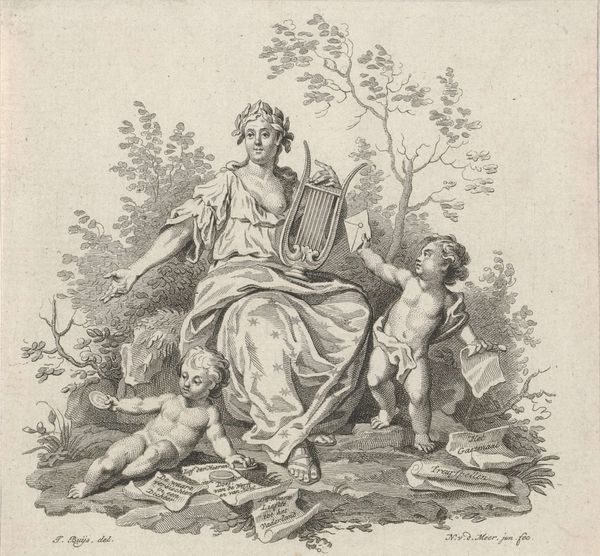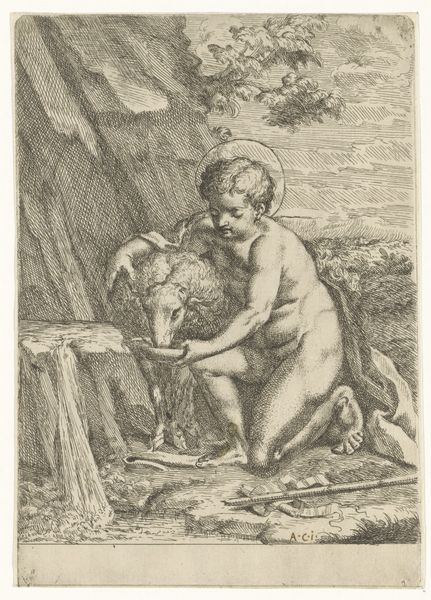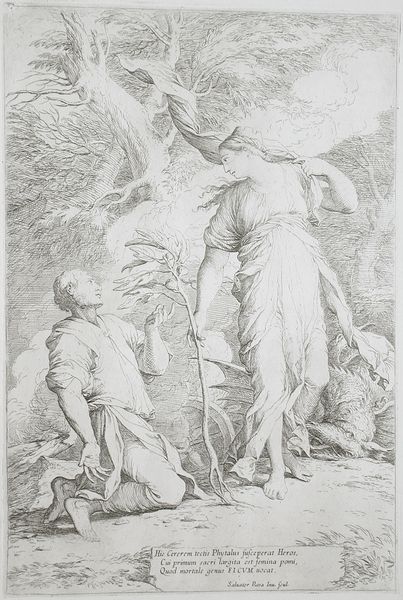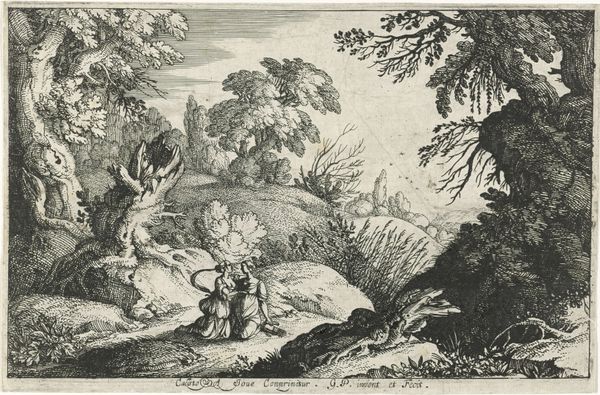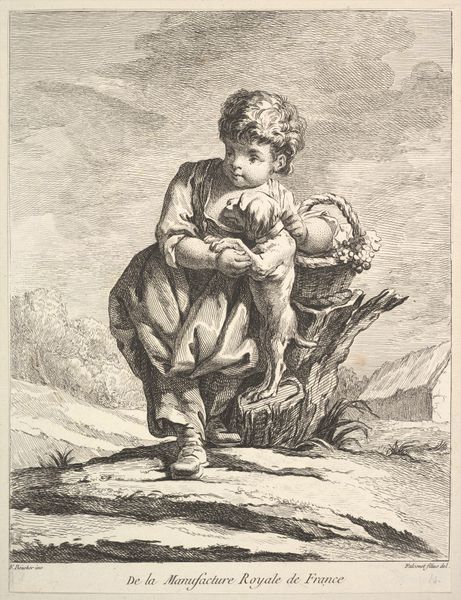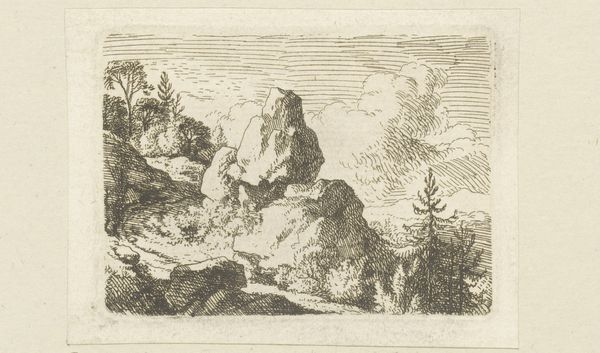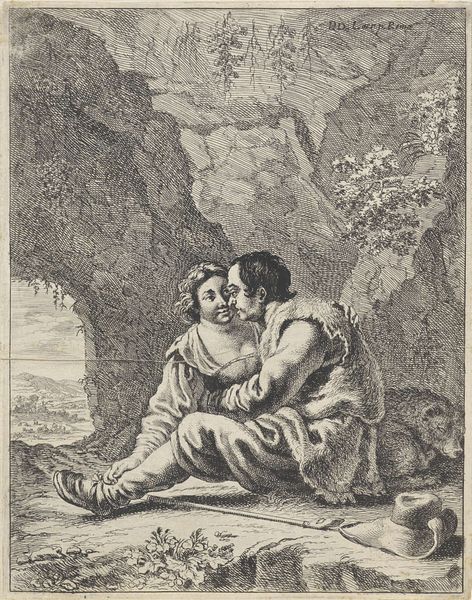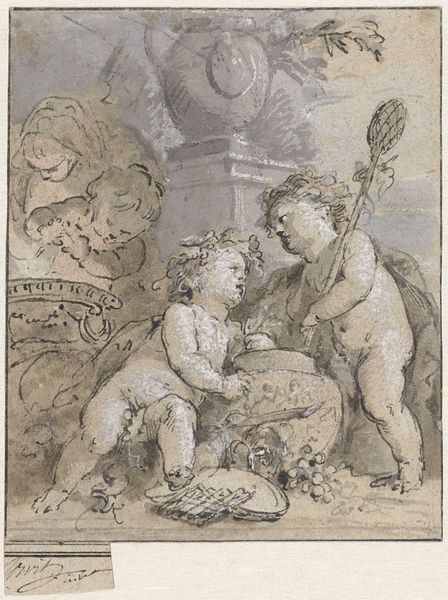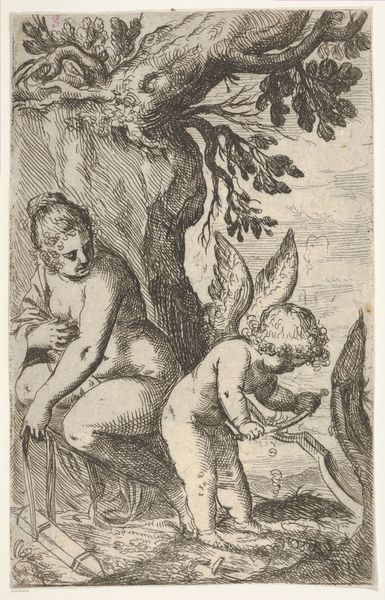
Dimensions: 190 mm (height) x 120 mm (width) (billedmaal)
Curator: What strikes me immediately is the stark vulnerability in the eyes of the child. It sets a disquieting tone. Editor: Indeed. Lorenz Frølich created this drawing, "Hakon Jarl ofrer sin søn," in 1852. The title translates to "Hakon Jarl Sacrificing His Son," a depiction of a very dramatic moment rendered in ink on paper. Curator: Human sacrifice... it speaks of desperation, of a society grappling with existential threats. Note how the artist emphasizes Hakon's forceful grip compared to the child’s delicate stature. The god figure overlooking the scene also looms large. I read the god's symbol as signifying an old pagan order and values, or its struggle to continue under new cultural powers. Editor: And what power! Think about how rulers cement their power through ritualistic displays of power like human sacrifice; these historical works showed just how fragile political rule can be when built only on dominance, thus working toward social change by unveiling uncomfortable truths about old ruling practices. The positioning of the knife mirrors his intent – and the statue gazes down, perhaps approving, perhaps indifferent. Curator: Indifference might be more telling. Gods in these depictions often symbolize inflexible, outdated ideologies that demand cruel devotion. The small offering bowls seem paltry next to the magnitude of what's being asked. The setting seems deliberate as well, in wild nature far removed from civilization itself where people must embrace their pagan origin rather than modern morals and practices, thereby inviting commentary and perhaps critique of certain practices of the time, through symbolic history artworks. Editor: The limited use of ink also serves the drawing, as the somewhat sparse, hurried style helps to portray a sense of conflict, which underscores that era of intense change within social and historical dimensions that many have conveniently looked away from through time and new rulers taking their turns ruling. It makes me contemplate the symbolic weight parents can bear in deciding the path of their children to preserve legacies or societies in moments of uncertainty. Curator: This piece really challenges viewers to question the choices leaders make and what ideologies truly serve their people, doesn't it? Editor: It leaves one pondering about the echoes of power, faith, and sacrifice—commodities often unequally demanded across society and cultures, past and present.
Comments
No comments
Be the first to comment and join the conversation on the ultimate creative platform.
